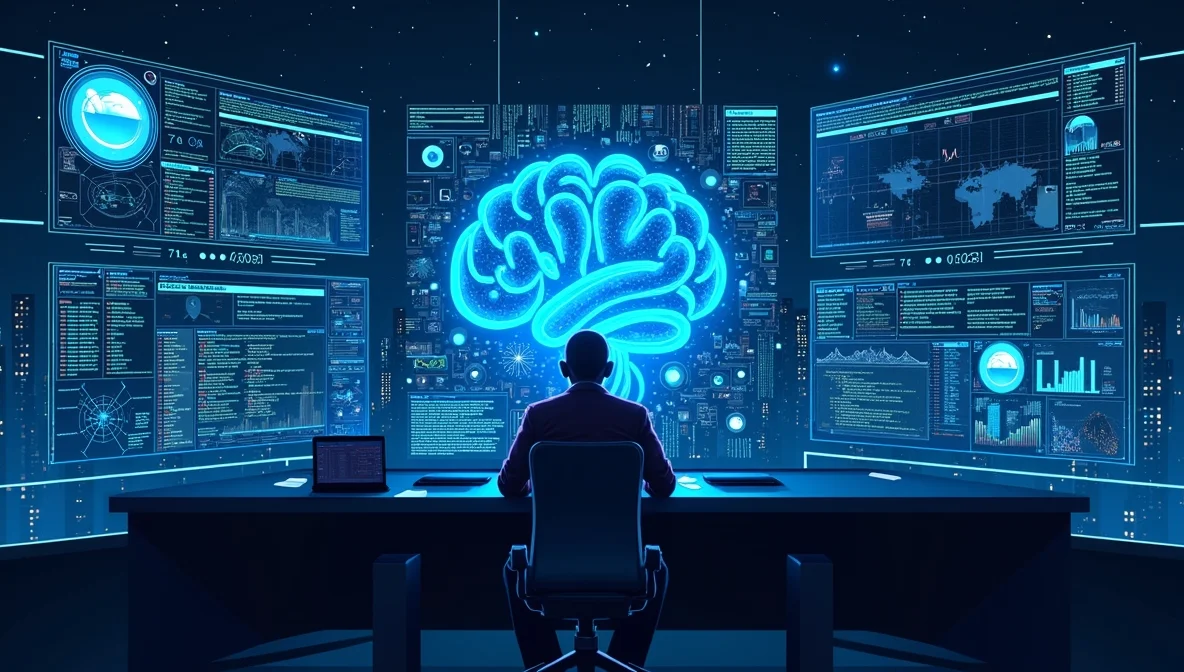AI in Cybersecurity: Enhancing Defenses Against Cyber Threats

The landscape of cyber threats is expanding rapidly in both scale and complexity. Traditional cybersecurity methods—such as firewalls, antivirus programs, and signature-based detection—are increasingly insufficient to address sophisticated attacks that evolve dynamically.
Artificial Intelligence (AI) has emerged as a transformative force in cybersecurity. By leveraging advanced algorithms and data-driven insights, AI enables faster threat detection, proactive defense strategies, and automated response mechanisms. This article explores how AI is redefining cybersecurity, with a particular focus on combating social engineering attacks.
What Is AI in Cybersecurity?
AI in cybersecurity refers to the application of machine learning, deep learning, natural language processing (NLP), and other AI technologies to detect, analyze, and respond to cyber threats more effectively than traditional methods.
Unlike conventional cybersecurity tools that operate on predefined rules, AI systems learn from data patterns and continuously adapt to new threats without manual intervention.
According to industry data from Cybersecurity Ventures, global spending on AI-powered cybersecurity solutions is projected to reach $46 billion by 2027, reflecting a significant adoption trend. Statista reports a compound annual growth rate exceeding 23%, highlighting the increasing reliance on AI to bolster defenses.
Key Benefits of AI in Cybersecurity
The integration of AI provides multiple advantages over traditional security frameworks:
- Real-Time Threat Detection: AI algorithms analyze massive volumes of data instantaneously, identifying threats as they emerge.
- Pattern Recognition: By establishing behavioral baselines, AI can detect deviations indicative of malicious activity.
- Automated Incident Response: AI automates repetitive tasks such as patching vulnerabilities and isolating compromised endpoints, reducing response times.
- Predictive Analytics: Leveraging historical data, AI forecasts potential attack vectors and prepares defenses proactively.
- Scalability: AI solutions can scale seamlessly across complex cloud and hybrid environments, ensuring consistent protection.
How AI Combats Advanced Threats
Modern cyber threats, including malware and social engineering attacks, are increasingly sophisticated and difficult to detect using traditional methods.
- Malware Detection: AI models identify novel malware variants by analyzing behavior and code characteristics, including fileless malware undetectable by signature-based tools.
- Social Engineering Attack Mitigation: AI employs natural language processing to scrutinize email content for phishing indicators, such as suspicious language or sender anomalies.
- Behavioral Analysis: AI monitors user and device activity to identify anomalies associated with compromised accounts or insider threats.
- Email Filtering: AI-enhanced filters detect spear phishing attempts by examining metadata, writing style, and contextual cues.
A notable example includes the deployment of AI-based systems in corporate environments where spear phishing campaigns mimicking executives were intercepted before any damage occurred.
Real-World Applications and Case Studies
- Endpoint Security: Platforms like CrowdStrike Falcon and SentinelOne use AI to detect and block threats on endpoints by monitoring behavior patterns.
- Security Information and Event Management (SIEM): Tools such as IBM QRadar and Splunk utilize AI to correlate vast log data for identifying complex attack patterns.
- Threat Intelligence: AI-driven platforms consolidate data from multiple sources to provide actionable intelligence on emerging threats.
In one instance, a global logistics company employed an AI system from Vectra AI that detected suspicious lateral movements associated with ransomware weeks before an attack, enabling timely mitigation and avoiding operational disruption.
Challenges and Limitations of Using AI in Cybersecurity
While AI offers substantial benefits, it also presents challenges:
- Cost and Resource Intensity: Implementation and maintenance require significant investment and skilled personnel.
- False Positives: AI systems can generate alerts for benign anomalies, potentially leading to alert fatigue.
- Adversarial AI Threats: Attackers are developing AI techniques to evade detection and manipulate AI models.
- Privacy Concerns: The data required to train AI systems may raise regulatory and privacy issues.
- Need for Human Oversight: Despite automation, expert human analysis remains critical to interpret AI outputs and make informed decisions.
The Role of AI in Preventing Social Engineering Attacks
Social engineering remains one of the most challenging cyber threats due to its reliance on psychological manipulation rather than technical vulnerabilities.
AI assists by:
- Monitoring User Behavior: Detecting irregular access patterns or unusual actions that may indicate compromised credentials.
- Impersonation Detection: Using deep learning to identify subtle linguistic and behavioral differences that suggest fraudulent communication.
- Preventing Business Email Compromise (BEC): AI systems analyze email metadata and communication patterns to flag potential CEO fraud and related scams.
A practical example includes a European financial institution where AI detected an attempted CEO impersonation by analyzing message content and timing discrepancies, preventing a fraudulent funds transfer.
Future Trends: What’s Next for AI in Cybersecurity?
The future of AI in cybersecurity is poised for further advancement, including:
- Zero-Trust Security Models: AI will automate continuous verification of users, devices, and applications.
- IoT and Cloud Integration: AI will enhance protection for the expanding attack surface created by IoT devices and cloud environments.
- Generative AI for Threat Simulation: AI-generated simulations will help organizations anticipate and prepare for emerging threats.
- Dynamic Cyber Risk Scoring: Real-time risk assessments will enable proactive security decisions across networks and third-party relationships.
Final Thoughts
Artificial Intelligence has become indispensable in modern cybersecurity strategies. It enhances detection, accelerates response, and offers predictive capabilities that traditional tools cannot match. However, AI is most effective when combined with human expertise, forming a hybrid approach that leverages the strengths of both.
Organizations should view AI as a critical complement—not a replacement—to skilled cybersecurity professionals. By embracing AI responsibly, businesses can strengthen their defenses and better protect against evolving cyber threats, including the pervasive risks of social engineering attacks.
Recent Posts
Recent Comments

Top Services Offered by an Artificial Intelligence Automation Agency

How Can AI-Powered Inbound Call Centers Improve Customer Satisfaction?

How AI and Automation Are Changing Commercial Animation Studios

The Future of Front Desk Management: Why AI Receptionists Are Leading the Way

What is a Capacitive Switch and How It Works?

Top Services Offered by an Artificial Intelligence Automation Agency

How Can AI-Powered Inbound Call Centers Improve Customer Satisfaction?
